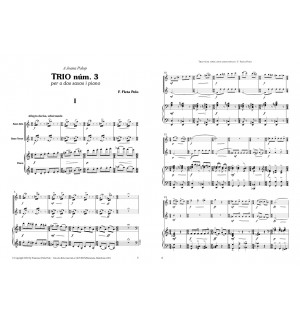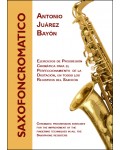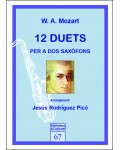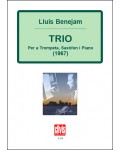
No products
Prices are tax included
Product successfully added to your shopping cart
There are 0 items in your cart. There is 1 item in your cart.
- English
- Castellano
- Català
 View larger
View larger
Trio núm. 3
DE689
The piece Trio núm. 3 is rather lengthy and is playful with the tonalities of the three main instruments from the saxophone family: with the piano ever-present, the first movement requires an alto and a tenor saxophone, the second a tenor and a baritone, and the third a duet of altos.
| Period | 20th c. |
| Subheading / Parts | per a dos saxos i piano |
| Instruments | 2sx.pno. |
| Pages | 64 |
| Time | 14 min. |
| Contents | score + parts |
| ISMN | 979-0-3502-0709-9 |
| Price of print edition | 23,50€ |
| Edition | Printed |
The musical life of Francisco Fleta Polo as a performer, teacher and composer has, by necessity, led him to become familiar with a diverse range of instruments. Not only can he write idiomatically for his own main three instruments (viola, violin and trumpet) but, when faced with composing for other instruments, performers can immediately tell that the piece has been written by someone with not inconsiderable knowledge of the instruments. The saxophone is a good example of this: this Trio per a dos saxos i piano (Trio for two saxophones and piano) has been put together by a composer who, despite not being a saxophonist himself, knows exactly how to get the best out of the instruments, asking only for what they can give, respecting their natural tessituras while exploring their potential, to produce brilliant and, simultaneously, original results.
This piece is rather lengthy (nearly fifteen minutes in duration) and is playful with the tonalities of the three main instruments from the saxophone family: the alto, tenor and baritone. With the piano ever-present, the first movement requires an alto and a tenor saxophone, the second a tenor and a baritone, and the third a duet of altos.
The writing in the first movement, vibrating and virtuosistic, has a vertical structure, which contrasts with the second and third movements, whose textures are more contrapuntal. In the second movement it is the part of the baritone saxophone that stands out (the piece is dedicated to Valencian musician, Joana Palop, who holds the baritone saxophone seat in the Banda Municipal de Barcelona) as well as a saxophone duet section without piano. Finally, the writing in the third movement is rather denser and requires very careful chamber work.
David Puertas







